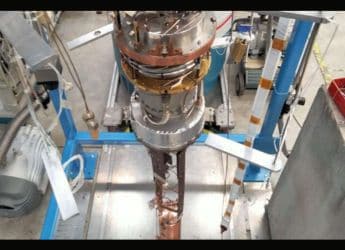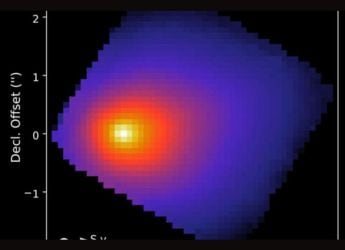- Home
- Science
- Science News
- Google Helps NASA Find 2 New Exoplanets, Using Machine Learning to Crunch Data
Google Helps NASA Find 2 New Exoplanets, Using Machine Learning to Crunch Data

Photo Credit: NASA
Alphabet's Google and NASA said on Thursday that advanced computer analysis identified two new planets around distant stars, including one that is part of the first star system with as many planets as Earth's solar system.
The research by Google and the University of Texas at Austin that used data from NASA raised the prospects of new insights into the universe by feeding data into computer programs that can churn through information faster and more in-depth than humanly possibly, a technique known as machine learning.
In this case, software learned differences between planets and other objects by analysing thousands of data points, achieving 96 percent accuracy, NASA said at a news conference.
The data came from the Kepler telescope which NASA launched into space in 2009 as part of a planet-finding mission that is expected to end next year as the spacecraft runs out of fuel.
The software's artificial "neural network" combed through data about 670 stars, which led to the discovery of planets Kepler 80g and Kepler 90i. The latter, a scorching, rocky mass 30 percent larger than Earth, is the eighth planet found to be orbiting the same star.
Astronomers had never before observed an eight-planet network beside the solar system that includes Earth, researchers said.
"As the application of neutral networks to Kepler data matures, who knows what might be discovered," said Jessie Dotson, a NASA project scientist for the Kepler space telescope. "I'm on the edge of my seat."
Christopher Shallue, an artificial intelligence researcher at Google, and Andrew Vanderburg, an astronomer at the University of Texas at Austin, said they plan to continue their work by analysing Kepler data on more than 150,000 other stars.
Advancements in hardware and new techniques for machine learning have made it possible in recent years for automated software to tackle data analysis in science, finance and other industries.
Machine learning had not been applied to data acquired by the Kepler telescope until Shallue came up with the idea, he said.
"In my spare time, I started Googling for 'finding exoplanets with large data sets' and found out about the Kepler mission and the huge data set available," he said. "Machine learning really shines in situations where there is so much data that humans can't search it for themselves."
Vanderburg has received funding through a NASA fellowship aimed at distant-planet researchers.
© Thomson Reuters 2017
Catch the latest from the Consumer Electronics Show on Gadgets 360, at our CES 2026 hub.
Related Stories
- Samsung Galaxy Unpacked 2025
- ChatGPT
- Redmi Note 14 Pro+
- iPhone 16
- Apple Vision Pro
- Oneplus 12
- OnePlus Nord CE 3 Lite 5G
- iPhone 13
- Xiaomi 14 Pro
- Oppo Find N3
- Tecno Spark Go (2023)
- Realme V30
- Best Phones Under 25000
- Samsung Galaxy S24 Series
- Cryptocurrency
- iQoo 12
- Samsung Galaxy S24 Ultra
- Giottus
- Samsung Galaxy Z Flip 5
- Apple 'Scary Fast'
- Housefull 5
- GoPro Hero 12 Black Review
- Invincible Season 2
- JioGlass
- HD Ready TV
- Laptop Under 50000
- Smartwatch Under 10000
- Latest Mobile Phones
- Compare Phones
- OPPO Reno 15 Pro Max
- Honor Win RT
- Honor Win
- Xiaomi 17 Ultra Leica Edition
- Xiaomi 17 Ultra
- Huawei Nova 15
- Huawei Nova 15 Pro
- Huawei Nova 15 Ultra
- Asus ProArt P16
- MacBook Pro 14-inch (M5, 2025)
- OPPO Pad Air 5
- Huawei MatePad 11.5 (2026)
- Xiaomi Watch 5
- Huawei Watch 10th Anniversary Edition
- Acerpure Nitro Z Series 100-inch QLED TV
- Samsung 43 Inch LED Ultra HD (4K) Smart TV (UA43UE81AFULXL)
- Asus ROG Ally
- Nintendo Switch Lite
- Haier 1.6 Ton 5 Star Inverter Split AC (HSU19G-MZAID5BN-INV)
- Haier 1.6 Ton 5 Star Inverter Split AC (HSU19G-MZAIM5BN-INV)

















